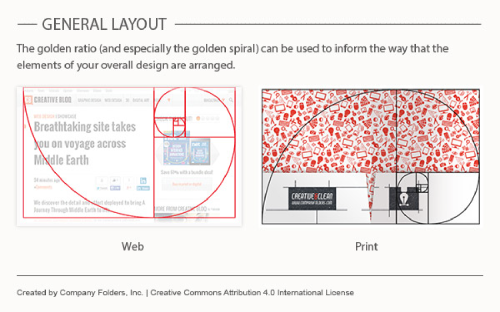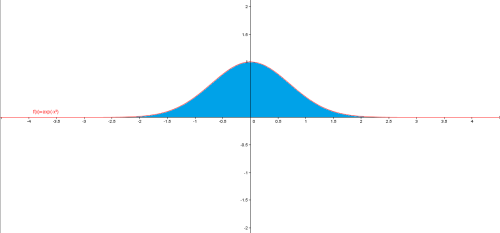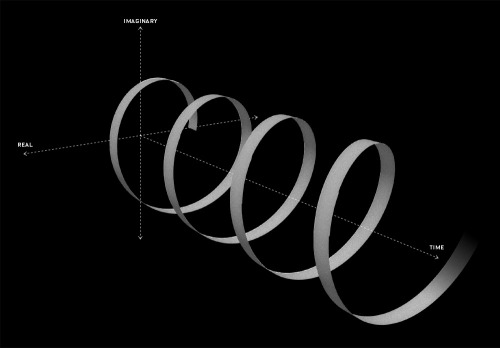How To Use The Golden Ratio
<3





How to use the Golden Ratio
source here.
More Posts from Vanderwaalrus and Others









A Harry Potter themed comic from Existential Comics, exhibiting Russell’s paradox in logic and set theory.
<3


The Gaussian Integral is a beautiful integral for which the area between the e^(-x^2) and the x-axis from negative infinity to positive infinity perfectly equals the square root of pi. Image sources: 1, 2.


Euler’s Identity: eiπ + 1 = 0. Euler’s Identity is an Equation about constants π and e. Both are “Transcendental” quantities; in decimal form, their digits unspool into Infinity. And both are ubiquitous in scientific laws. But they seem to come from different realms: π (3.14159 …) governs the perfect Symmetry and closure of the Circle; it’s in Planetary Orbits, the endless up and down of light waves. e (2.71828 …) is the foundation of exponential growth, that accelerating trajectory of escape inherent to compound interest, nuclear fission, Moore’s law. It’s used to model everything that grows. What Euler showed is that π and e are deeply related, connected in a dimension perpendicular to the world of real things - a place measured in units of i, the square root of -1, which of course doesn’t … exist. Mathematicians call it an imaginary number. These diagrams are visual metaphors. Imagine a graph with real numbers on the horizontal axis and imaginary ones on the vertical. Exponential function, f(x) = ex, ordinarily it graphs as an upward swooping curve - the very paradigm of progress. But put i in there, Euler showed, and eix instead traces a circle around the origin - an endless wheel of Samsara intercepting Reality at –1 and +1. Add another axis for Time and it’s a helix winding into the Future; viewed from the side, that helix is an oscillating sine wave.The rest is easy: Take that function f(x) = eix, set x = π, and you get eiπ = -1. Rearrange terms and you have the famous identity: eiπ + 1 = 0. That’s the essence of Euler’s alchemy: By venturing off the real number line into this empyrean dimension, he showed that disruptive, exponential change (the land of e) reduces to infinite repetition (π). These diagrams combine the five most fundamental numbers in math - 0, 1, e, i, and π - in a relation of irreducible simplicity. e and π are infinitely long decimals with seemingly nothing in common, et they fit together perfectly - not to a few places, or a hundred, or a million, but all the way to forever.
You can take this farther, too. If you write that function above in a more general but still simple form as f(x) = e(zx), where z = (a + bi), what you get is no longer a circle but a logarithmic spiral, combining rotation and growth - now both at the same time- These graceful spirals are also found everywhere in Nature, from the whorls in a nautilus shell to the sweeping arms of Galaxies. And they’re related, in turn, to the Golden Ratio (yet another infinite decimal, 1.61803 …) and the Fibonacci Sequence of Numbers (0, 1, 1, 2, 3, 5, 8, 13, 21, 34, 55, 89, …). But the weirdest thing about Euler’s formula - given that it relies on imaginary numbers - is that it’s so immensely useful in the real world. By translating one type of motion into another, it lets engineers convert messy trig problems into more tractable algebra - like a wormhole between separate branches of math. It’s the secret sauce in Fourier transforms used to digitize music, and it tames all manner of wavy things in quantum mechanics, electronics, and signal processing; without it, computers would not exist.

For the first time, scientists have discovered a classic formula for pi in the world of quantum physics. Pi is the ratio between a circle’s circumference and its diameter, and is incredibly important in pure mathematics, but now scientists have also found it “lurking” in the world of physics, when using quantum mechanics to compare the energy levels of a hydrogen atom.
Why is that exciting? Well, it reveals an incredibly special and previously unknown connection between quantum physics and maths.
“I find it fascinating that a purely mathematical formula from the 17th century characterises a physical system that was discovered 300 years later,” said one of the lead researchers, Tamar Friedmann, a mathematician at the University of Rochester in the US. Seriously, wow.
The discovery was made when Carl Hagen, a particle physicist at the University of Rochester, was teaching a class on quantum mechanics and explaining to his students how to use a quantum mechanical technique known as the ‘variation principle’ to approximate the energy states of a hydrogen atom.
While comparing these values to conventional calculations, he noticed an unusual trend in the ratios. He asked Friedmann to help him work out this trend, and they quickly realised that it was actually a manifestation of the Wallis formula for pi – the first time it had even been derived from physics.
“We weren’t looking for the Wallis formula for pi. It just fell into our laps,” said Hagen. “It was a complete surprise,” added Friedmann. “I jumped up and down when we got the Wallis formula out of equations for the hydrogen atom.”
Since 1655 there have been plenty of proofs of Wallis’s formula, but all have come from the world of mathematics, and the new results have people freaking out. The results have been published in the Journal of Mathematical Physics.
Continue Reading.

Today the 2015 Nobel Prize in Physics was awarded, for the discovery that neutrinos can change ‘flavours’ and have mass.
All the science-related Nobel graphics are being compiled here: bit.ly/NobelSci2015


Wave Function
A wave function in quantum mechanics describes the quantum state of an isolated system of one or more particles. There is one wave function containing all the information about the entire system, not a separate wave function for each particle in the system. Its interpretation is that of a probability amplitude. Quantities associated with measurements, such as the average momentum of a particle, can be derived from the wave function. It is a central entity in quantum mechanics and is important in all modern theories, like quantum field theory incorporating quantum mechanics, while its interpretation may differ. The most common symbols for a wave function are the Greek letters ψ or Ψ
The image above shows the comparison of classical and quantum harmonic oscillator conceptions for a single spinless particle. The two processes differ greatly. The classical process (A–B) is represented as the motion of a particle along a trajectory. The quantum process (C–H) has no such trajectory. Rather, it is represented as a wave. Panels (C–F) show four different standing wave solutions of the Schrödinger equation. Panels (G–H) further show two different wave functions that are solutions of the Schrödinger equation but not standing waves.


Visualization showing the flow of first 10,000 digits of Pi, revealing how the number Pi looks like. Circle is divided in 10 segments, from 0 to 9. Then path is traced, going from the third segment to the first segment. From 1, the path jumps to 4, then back to 1, then 5 and so on. After a while, Pi appears in front of your eyes. The final illustration is beautiful.

Looking at the stars from the inside of one of the Keck domes, at Mauna Kea.
-
 lartdumond reblogged this · 1 month ago
lartdumond reblogged this · 1 month ago -
 devotedlyhardmentality liked this · 1 year ago
devotedlyhardmentality liked this · 1 year ago -
 thememezone reblogged this · 2 years ago
thememezone reblogged this · 2 years ago -
 qiisevil reblogged this · 2 years ago
qiisevil reblogged this · 2 years ago -
 qiisevil liked this · 2 years ago
qiisevil liked this · 2 years ago -
 pedrummond reblogged this · 2 years ago
pedrummond reblogged this · 2 years ago -
 imsh liked this · 2 years ago
imsh liked this · 2 years ago -
 sergio339 liked this · 3 years ago
sergio339 liked this · 3 years ago -
 coffee-math-chamomile liked this · 3 years ago
coffee-math-chamomile liked this · 3 years ago -
 balto16 liked this · 3 years ago
balto16 liked this · 3 years ago -
 whatsthelatestihavetobethere reblogged this · 3 years ago
whatsthelatestihavetobethere reblogged this · 3 years ago -
 porcelainbreakks liked this · 3 years ago
porcelainbreakks liked this · 3 years ago -
 eyesofdeadfish liked this · 3 years ago
eyesofdeadfish liked this · 3 years ago -
 kobithedragon reblogged this · 3 years ago
kobithedragon reblogged this · 3 years ago -
 kobithedragon liked this · 3 years ago
kobithedragon liked this · 3 years ago -
 in-ade-quategh0st reblogged this · 3 years ago
in-ade-quategh0st reblogged this · 3 years ago -
 in-ade-quategh0st liked this · 3 years ago
in-ade-quategh0st liked this · 3 years ago -
 coolprius reblogged this · 4 years ago
coolprius reblogged this · 4 years ago -
 sandydelreal liked this · 4 years ago
sandydelreal liked this · 4 years ago -
 cephei1618 liked this · 4 years ago
cephei1618 liked this · 4 years ago -
 polarisnox liked this · 4 years ago
polarisnox liked this · 4 years ago -
 bigstinkyidiot liked this · 4 years ago
bigstinkyidiot liked this · 4 years ago -
 dontforgettobenerdy liked this · 4 years ago
dontforgettobenerdy liked this · 4 years ago -
 femmepathy liked this · 4 years ago
femmepathy liked this · 4 years ago -
 spiketacus liked this · 4 years ago
spiketacus liked this · 4 years ago -
 boopboopsnoop liked this · 4 years ago
boopboopsnoop liked this · 4 years ago -
 lune-tic reblogged this · 4 years ago
lune-tic reblogged this · 4 years ago -
 lune-tic liked this · 4 years ago
lune-tic liked this · 4 years ago -
 radiocrash liked this · 4 years ago
radiocrash liked this · 4 years ago -
 zukkacore reblogged this · 4 years ago
zukkacore reblogged this · 4 years ago -
 zukkacore liked this · 4 years ago
zukkacore liked this · 4 years ago -
 fagdykefrank liked this · 4 years ago
fagdykefrank liked this · 4 years ago -
 myownprivatcidaho reblogged this · 4 years ago
myownprivatcidaho reblogged this · 4 years ago